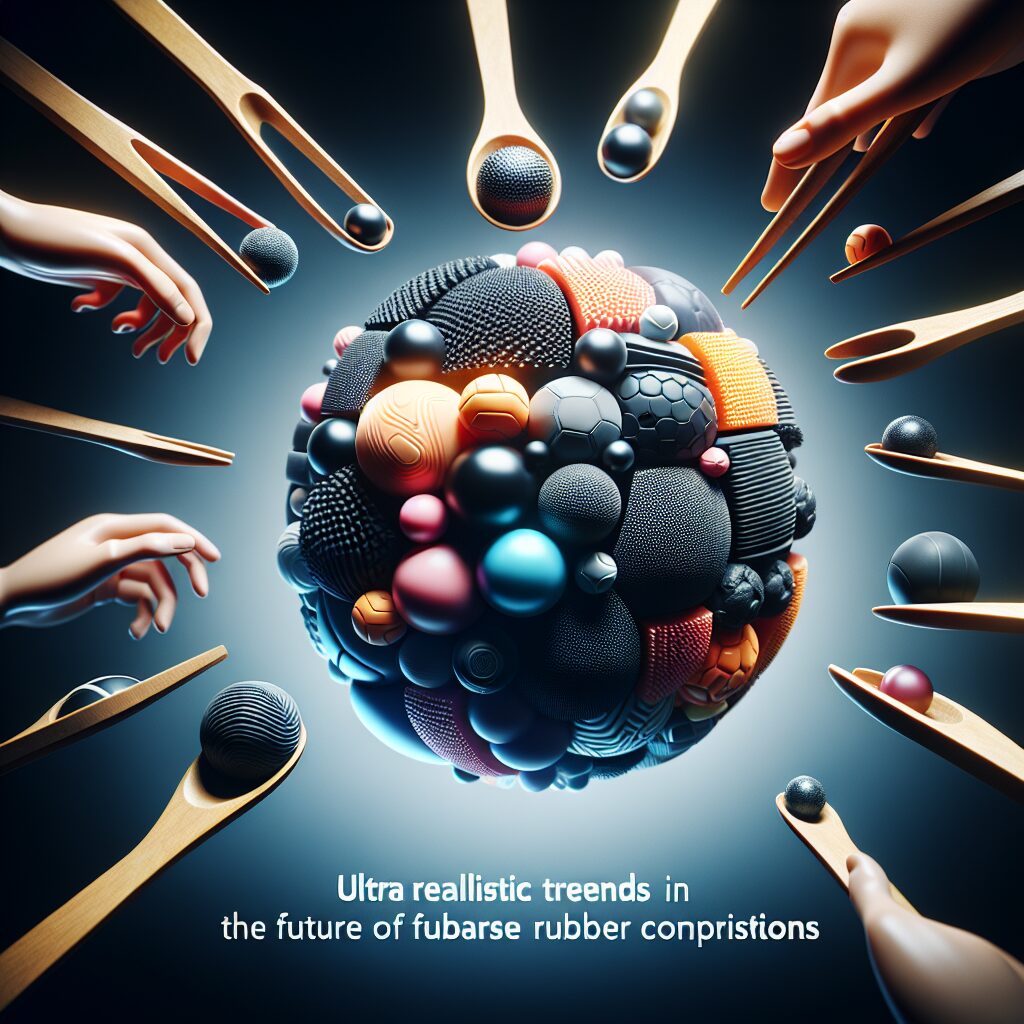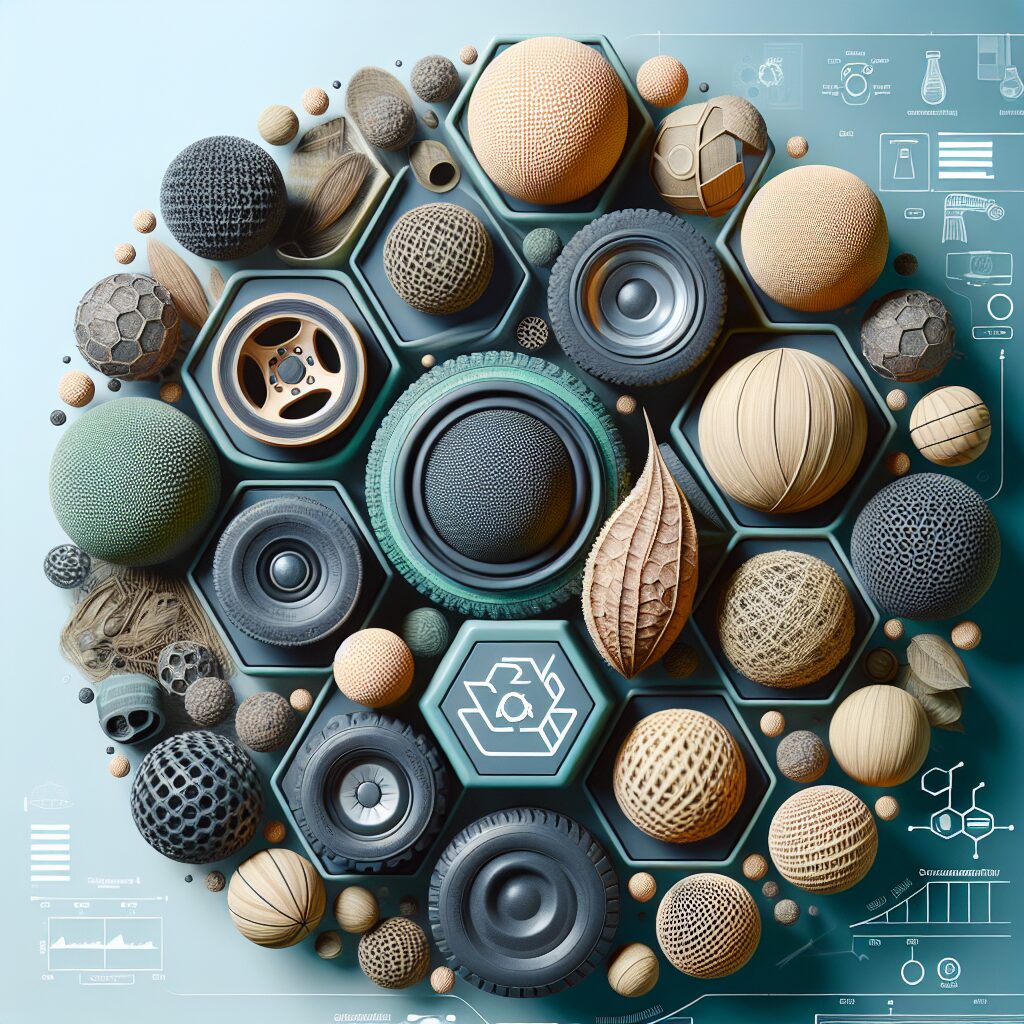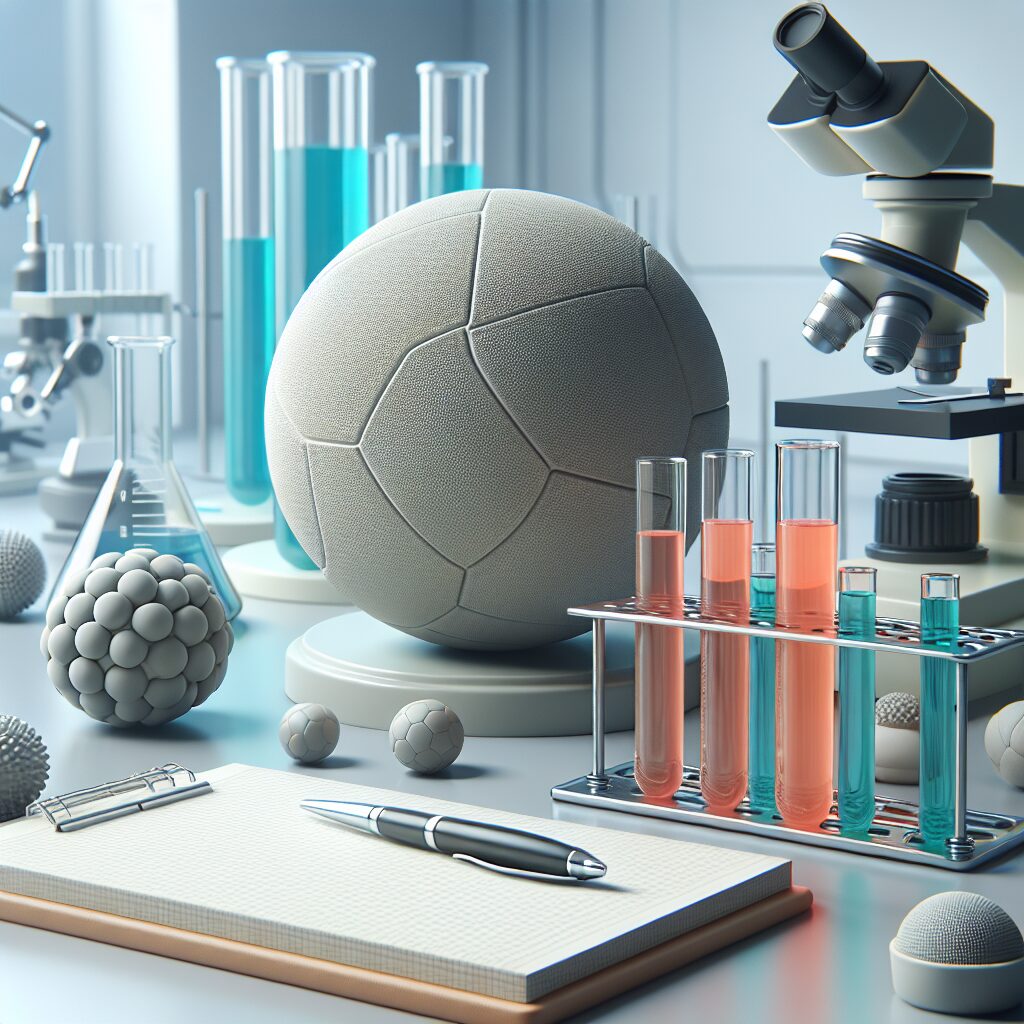The future of rubber composition in balls is a topic of great interest and significance in various industries. Rubber composition plays a crucial role in the performance and durability of balls used in sports, industrial applications, and even everyday use. To understand the emerging trends in this field, it is essential to delve into the unique features and specific impacts that the evolution of rubber composition brings forth.
Rubber, a versatile material known for its elasticity and resilience, has been used extensively in ball manufacturing for decades. However, recent advancements in materials science and technology have given birth to exciting innovations in rubber composition. These advancements have resulted in balls that exhibit enhanced performance, improved durability, and even reduced environmental impact. From high-performance sports balls that provide superior grip and bounce to industrial balls designed for specific applications, the future of rubber composition holds immense potential.
Moving forward, it is important to explore the key takeaways from these emerging trends in rubber composition. This article will delve into the impact of innovative rubber compositions on various industries, such as sports, manufacturing, and even consumer products. Additionally, we will discuss the potential environmental benefits of these new compositions and how they contribute to sustainability efforts. By examining the future of rubber composition in balls, we can gain valuable insights into the exciting possibilities that lie ahead.
Key Takeaways
1. The future of rubber composition in balls is being shaped by emerging trends that aim to improve performance and sustainability. Manufacturers are exploring new materials and technologies to enhance the durability, bounce, and grip of rubber balls.
2. Nanotechnology is revolutionizing the rubber industry, allowing for the creation of balls with improved properties. By manipulating rubber at the molecular level, scientists can increase elasticity, reduce friction, and enhance overall performance. This technology also opens up new possibilities for creating customizable balls for specific sports and playing conditions.
3. Eco-friendly rubber compositions are gaining traction in response to increasing consumer demand for sustainable products. Manufacturers are developing alternative rubber sources, such as guayule and dandelions, which require less water and chemicals compared to traditional rubber trees. These innovations aim to reduce environmental impact and create a more circular economy.
4. The integration of sensor technology in rubber balls is transforming the way sports are played and analyzed. By embedding sensors within the rubber composition, players and coaches can gather real-time data on performance metrics such as spin rate, impact force, and trajectory. This information can be used to analyze and improve techniques, as well as enhance the spectator experience.
5. The future of rubber composition in balls also involves a focus on safety. Manufacturers are investing in research and development to create rubber materials that reduce the risk of injuries, such as concussions. By engineering balls with improved shock absorption and energy dissipation properties, athletes can enjoy safer and more enjoyable sporting experiences.
The Advancements in Rubber Composition for Balls: What Does the Future Hold?
The Current State of Rubber Composition in Balls
The composition of rubber in balls has evolved significantly over the years, enhancing their performance in various sports and recreational activities. Historically, natural rubber was the primary choice for ball construction. However, advancements in technology have led to the inclusion of synthetic rubbers and innovative composite blends. These developments have resulted in improved durability, bounce, grip, and overall playability of balls across different sports.
The Emergence of Synthetic Rubbers in Ball Manufacturing
Synthetic rubbers, derived from petroleum-based compounds, have revolutionized ball manufacturing. These rubbers offer increased control over the final properties of the ball, as their chemical composition can be tailored to specific requirements. Manufacturers can select synthetic rubbers with varying hardness, resilience, and friction characteristics to optimize the performance of balls in different sports.
Innovative Composite Blends for Enhanced Performance
In recent years, the industry has witnessed the rise of composite blends, combining different materials to achieve superior ball performance. These blends often include a mix of synthetic rubbers, natural rubbers, and other additives. By strategically blending these components, manufacturers can create balls with specific properties, such as enhanced grip, higher durability, and improved rebound.
The Impact of Advanced Materials on Ball Performance
Advancements in materials science have led to the development of alternative compounds that aim to further enhance ball performance. For instance, the incorporation of microfibers or nanomaterials into rubber compositions can improve the ball’s strength, resilience, and deformation resistance. These cutting-edge materials offer exciting possibilities for the future of ball manufacturing, pushing the boundaries of performance even further.
Environmental Considerations in Rubber Composition
As sustainability becomes increasingly important, there is a growing interest in eco-friendly rubber alternatives. Manufacturers are exploring options such as recycled rubber or bio-based materials derived from renewable resources. These environmentally conscious choices aim to reduce the carbon footprint associated with ball production, while still delivering high-performance attributes.
Industry Trends and Future Prospects
The future of rubber composition in balls is poised for further advancement. Industry experts predict an increased emphasis on customization, with manufacturers tailoring ball compositions to specific sports and playing conditions. Additionally, ongoing research and development efforts will likely explore new materials and manufacturing processes to enhance performance and sustainability.
Key Considerations for Choosing the Right Ball:
- What sport or activity will the ball be used for?
- Do you prioritize durability or enhanced performance?
- What kind of playing conditions will the ball be exposed to?
- Are you looking for an eco-friendly option?
- Do you prefer a specific feel or grip on the ball?
- What budget do you have for purchasing the ball?
Frequently Asked Questions
Question 1: What are the emerging trends in rubber composition for balls?
Answer: The future of rubber composition in balls is witnessing several emerging trends. Manufacturers are increasingly focusing on developing rubber compositions that offer improved durability, enhanced grip, and optimal performance. These compositions may include advanced synthetic materials, specialized rubber blends, or innovative additives.
Question 2: How do rubber composition trends affect the performance of balls?
Answer: The evolving rubber composition trends have a direct impact on the performance of balls. By incorporating new materials and additives, manufacturers can enhance the bounce, flight accuracy, and longevity of balls. These advancements enable athletes to achieve better control, precision, and consistency in their respective sports.
Question 3: Are there any eco-friendly rubber compositions being developed?
Answer: Yes, the future of rubber composition in balls also involves the development of eco-friendly options. Manufacturers are exploring sustainable alternatives to traditional rubber materials by using recycled rubber, bio-based materials, or natural rubber substitutes. These environmentally friendly compositions aim to reduce the carbon footprint without compromising performance.
Question 4: How can rubber composition innovations benefit professional athletes?
Answer: Rubber composition innovations can offer significant advantages to professional athletes. By adopting cutting-edge rubber compositions, athletes can experience improved grip for better ball control, reduced vibration for enhanced comfort, and heightened durability for prolonged usage. These advancements can greatly contribute to their performance and overall skill development.
Question 5: What challenges do manufacturers face in developing new rubber compositions for balls?
Answer: Manufacturers encounter several challenges while developing new rubber compositions. These include finding the right balance between durability and performance, ensuring consistent quality across production batches, overcoming cost restrictions, and maintaining compliance with safety regulations. Overcoming these hurdles is crucial to producing innovative rubber compositions.
Question 6: Are there any regulations governing the rubber composition of balls?
Answer: Yes, there are regulations in place to govern the rubber composition of balls. Sporting organizations and international standardization bodies set guidelines for factors like bounce height, hardness, and overall performance. These regulations ensure fair play, safety, and compatibility of balls across different sports and competitions.
Question 7: Can rubber composition advancements impact the pricing of balls?
Answer: Rubber composition advancements can influence the pricing of balls. Introducing new and advanced materials may initially increase production costs, which can be reflected in the pricing. However, as these compositions become more widely adopted and standardized, economies of scale can lead to cost reductions, ultimately affecting the pricing of the balls positively.
Question 8: How do rubber composition trends contribute to injury prevention?
Answer: Rubber composition trends can contribute to injury prevention. Improved grip and control offered by advanced compositions reduce the chances of the ball slipping or bouncing unpredictably, minimizing the risk of accidents. Additionally, optimized shock absorption properties can help prevent long-term joint and muscle injuries caused by repetitive impacts.
Question 9: What impact can rubber composition advancements have on sports equipment manufacturing?
Answer: Rubber composition advancements have a profound impact on sports equipment manufacturing. By continually pushing the boundaries of what rubber compositions can achieve, manufacturers are able to develop innovative products that improve overall performance, durability, and player experience. These advancements also drive competition and innovation within the industry.
Question 10: How can consumers stay updated with the latest rubber composition trends in balls?
Answer: Consumers can stay updated with the latest rubber composition trends in balls by following reputable sports equipment manufacturers, industry blogs, and expert publications. Engaging in online communities and forums related to specific sports can also provide valuable insights and discussions on emerging trends and advancements.
Final Thoughts on The Future of Rubber Composition in Balls: Emerging Trends
The future of rubber composition in balls is constantly evolving, driven by the pursuit of better performance, durability, and sustainability. As manufacturers continue to explore new materials, innovative additives, and eco-friendly alternatives, the potential for improved ball characteristics and athlete experience grows exponentially.
While challenges persist in terms of production costs, quality control, and regulatory compliance, the benefits of rubber composition advancements outweigh the obstacles. From professional athletes seeking a competitive edge to recreational players aiming for enjoyment and safety, the impact of emerging trends in rubber composition extends to athletes of all levels and across various sports. As consumers, it is essential to stay informed about the latest developments and embrace the future of rubber composition in balls to elevate our sporting experiences.




